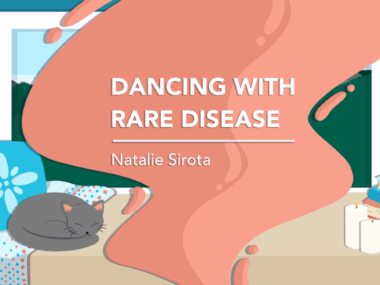Even if we have common symptoms of HAE, each patient is unique
I struggled to make sense of my daughter's ailments, even after her diagnosis
Written by |

The first person in our family to be diagnosed with hereditary angioedema (HAE) was our youngest, adopted daughter, Leah, who’d been seriously ill for years. Genetic tests have since confirmed that she was born with several conditions; they became extremely pronounced once she reached puberty.
Leah endured recurrent upper respiratory infections and multiple hospitalizations before we adopted her from Ukraine. But her tonsils were removed after a few bouts of strep shortly after arriving in the United States, so that ceased to be a problem.
She had also experienced oral ulcers, periodic fevers, random rashes, fatigue, headaches, joint pain, and more throughout childhood, so our first thought was to look at periodic fever syndromes. But her pediatrician said she didn’t meet all the criteria and ruled out pediatric autoimmune neuropsychiatric disorders associated with streptococcal infections, also known as PANDAS.
Her first constant complaint, a nonstop daily headache, began shortly after she turned 12 and continues today, a decade later. That was quickly followed by a cascade of other symptoms, including rash, gastrointestinal upset, fatigue, and anxiety. It was all confusing.
Before she was diagnosed with HAE type 2, Leah had visited multiple specialists — about 40 over a four-year period — most of whom were baffled by her case. For a time, she even had a central line placed for administering intravenous medications and multiple daily saline boluses. Leah and our entire family were overwhelmed.
Finding answers … and more questions
It took four years before we found an immunologist who suggested HAE, which I’d never heard of. He did some testing and then mentioned a treatment he thought might benefit her. I was in tears simply at the idea that something might finally help my daughter!
Within a month of starting the HAE treatment, she felt so much better that her central line was removed. By that time, I’d done a lot of research about the condition. I realized that Leah had experienced classic HAE symptoms over the years, such as rash, gastrointestinal attacks, and even the life-threatening throat swelling that can cause asphyxiation. But not all of her symptoms seemed to align with HAE. Again, I was confused.
When we returned to the doctor, I asked him if HAE could cause Leah’s headache and vascular inflammation, as I hadn’t seen those issues included on any symptom list. He assured me that many HAE patients present clinically with brain and vascular inflammation.
I also spoke with the specialty pharmacists who provide her daily and emergency HAE medications. They confirmed that while it may not be a typically documented symptom in the peer-reviewed data, vascular inflammation has been reported as a clinical symptom. It seems like being unique is also a symptom of this rare disease!
Since then, my biological son and I have also been diagnosed with HAE. Dorian has type 1 and presents with classic symptoms like rashes and unilateral swelling of the face and feet. I have HAE type 3, meaning my C1 inhibitor levels are normal. I mostly have abdominal symptoms and internal swelling. My firstborn daughter, Aria, was diagnosed with acute allergic angioedema and has the hallmark facial swelling.
I’ve been told that having four types of angioedema in one family is rather unique. I just think we’re all zebras with differing stripes.
Note: Angioedema News is strictly a news and information website about the disease. It does not provide medical advice, diagnosis, or treatment. This content is not intended to be a substitute for professional medical advice, diagnosis, or treatment. Always seek the advice of your physician or other qualified health provider with any questions you may have regarding a medical condition. Never disregard professional medical advice or delay in seeking it because of something you have read on this website. The opinions expressed in this column are not those of Angioedema News or its parent company, Bionews, and are intended to spark discussion about issues pertaining to angioedema.





Leave a comment
Fill in the required fields to post. Your email address will not be published.